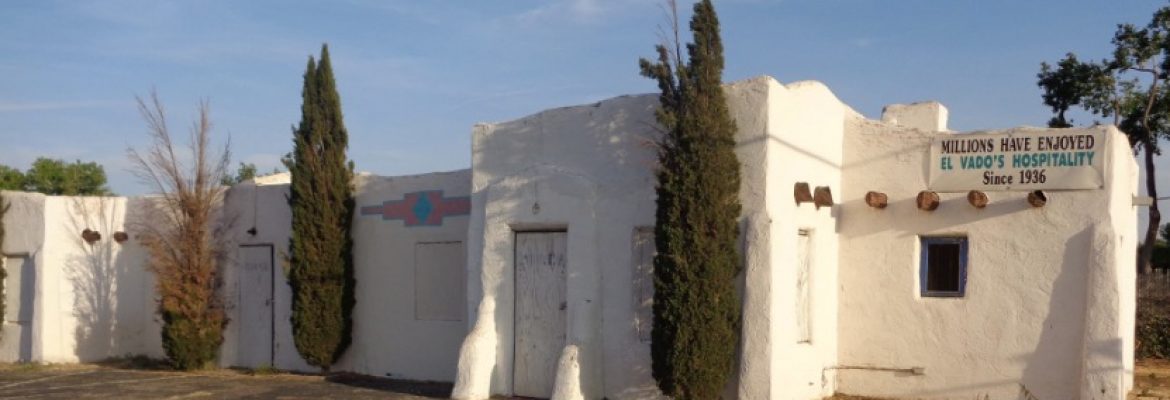El Vado Auto Court Motel, Albuquerque, New Mexico, USA
In anticipation of the realignment of Route 66 through Albuquerque, Daniel Murphy left his post as manager of the Franciscan Hotel in downtown Albuquerque to open the El Vado in 1937. Mr. Murphy, an Irishman who learned the hotel business in New York City before coming to New Mexico, constructed the El Vado Auto Court Motel along Central Avenue in Albuquerque near the Rio Grande and Old Town. He chose the motel’s name Vado, which means ‘ford’ in Spanish, for its location near the old ford that crossed the Rio Grande where Bridge Street is today.
The motel consists of 32 units, some of which are interspersed with covered carports, arranged in two parallel, one-story buildings facing a parking courtyard. When the motel opened, gas pumps were located along Central Avenue in front of the motel office on the northeast corner of the site. A flashy neon sign topped by an American Indian wearing a colorful headdress welcomes travelers on Route 66. Mr. Murphy constructed the motel in the Spanish Pueblo Revival style. Purposely-designed irregularities give the motel the look of the nearby Pueblos. These include curvilinear and straight parapets, irregular massing, varying buttresses, and exposed vigas (wooden roof beams). The interior of the motel office and lobby is ornately decorated in the Pueblo style. When the motel opened in 1937, the local business journal Albuquerque Progress described the units as “swanky tile cabin suites ready for the summer tourist trade.”
The El Vado retains a high degree of historic integrity, because it has been largely unaltered since its original construction. Route 66 historian David Kammer describes the motel as “one of the best examples of a largely unaltered pre-World War II tourist courts remaining along Route 66 in New Mexico.” Alterations include the removal of the gas pumps in front of the motel office, the addition of a swimming pool, the replacement of original windows with metal double-hung windows, and the painting of Southwest Indian designs on the façade. The El Vado’s relatively unaltered appearance coupled with its spatial arrangement, remaining carports, and use of Spanish Pueblo Revival style convey a strong sense of the property’s era. The El Vado is historically significant for its association with automobile tourism along Route 66; its role as an auto court in defining Albuquerque’s growth, appearance, and image; and its picturesque architectural style designed to attract tourism and immerse travelers in the exoticism and mystique of the Southwest. It was listed in the National Register of Historic Places in 1993.


